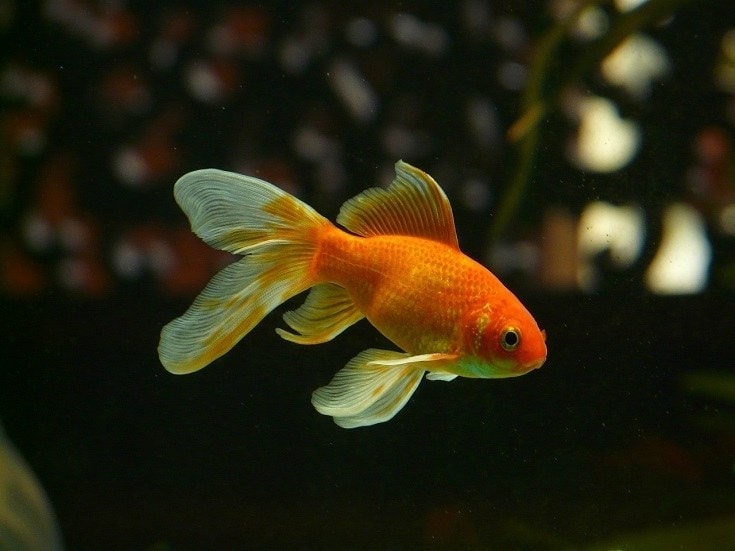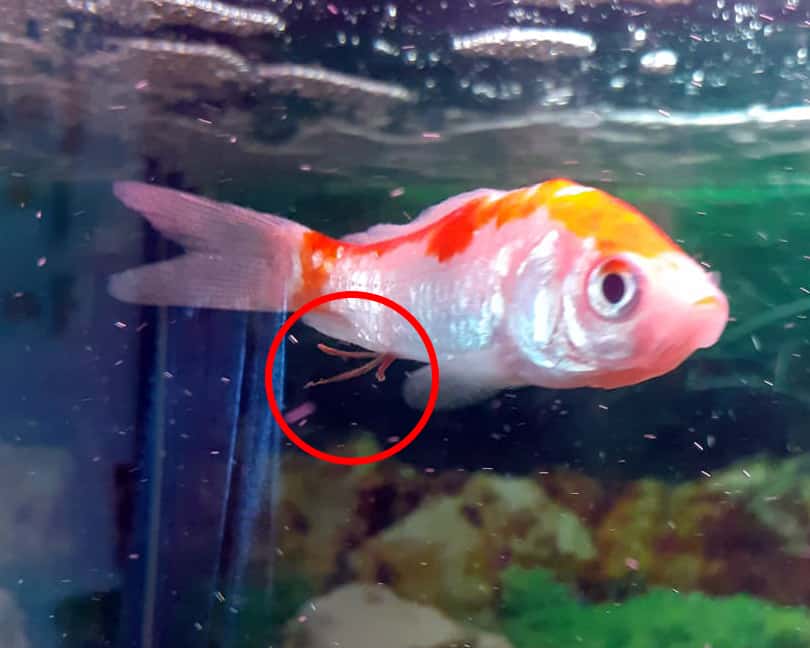German Blue Ram Cichlid: Care Guide, Pictures, Behaviour, Lifespan & More
Updated on
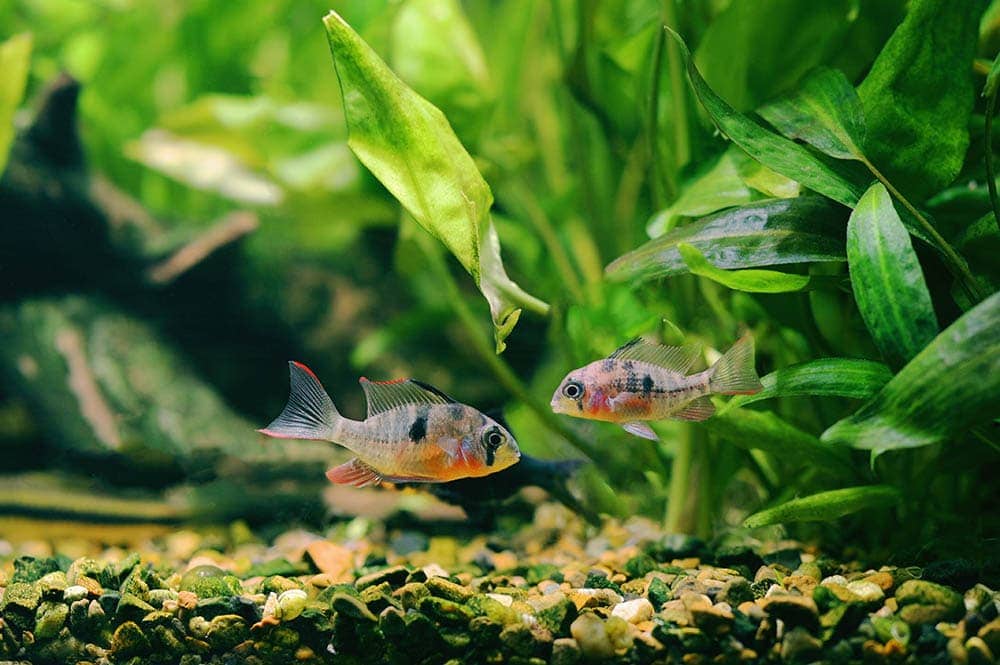
The Ram cichlid is a striking cichlid variety that brings bright color and a lively temperament to tanks. This fish has many names, including Blue Ram, German Blue Ram, Ram, Asian Ram, Ramirez’s dwarf, Butterfly, and Ramirezi, which comes from its species name, Mikrogeophagus ramirezi. This fish should not be confused with its close relative, the Bolivian Ram. Whether you’ve spotted these fish in a store and thought about bringing one home or you’re learning about them for the first time, here’s what you should know about the Ram cichlid.
| Size: | 2–3 inches |
| Lifespan: | 2–4 years |
| Similar Breeds: | Bolivian Ram, Apistogramma dwarf |
| Suitable for: | Freshwater community tanks, experienced fishkeepers |
| Temperament: | Active, docile, semi-territorial |
Not only is the Ram one of the loveliest cichlid species, but it also is a manageable size and has a desirable temperament. In fact, it’s often considered to be the most docile and peaceful cichlid species in the aquarium trade. This popular fish loves to show off its sporty colors, bringing life to your tank.
Ram Cichlid Breed Characteristics
Ram Cichlid Cost
The Ram cichlid is a popular freshwater fish, so you likely won’t have any trouble finding one. You can typically expect to spend between $10–20 on a single fish, and while these fish can be kept singularly, they do best when kept in pairs of a male and female. Two females can also be kept together, but it’s not recommended to keep two males together unless the tank is large enough for each to have his own territory.
This fish is native to South America, coming from the Orinoco River basin in Venezuela and Colombia. However, most of the Rams in the aquarium trade are captive-bred fish.
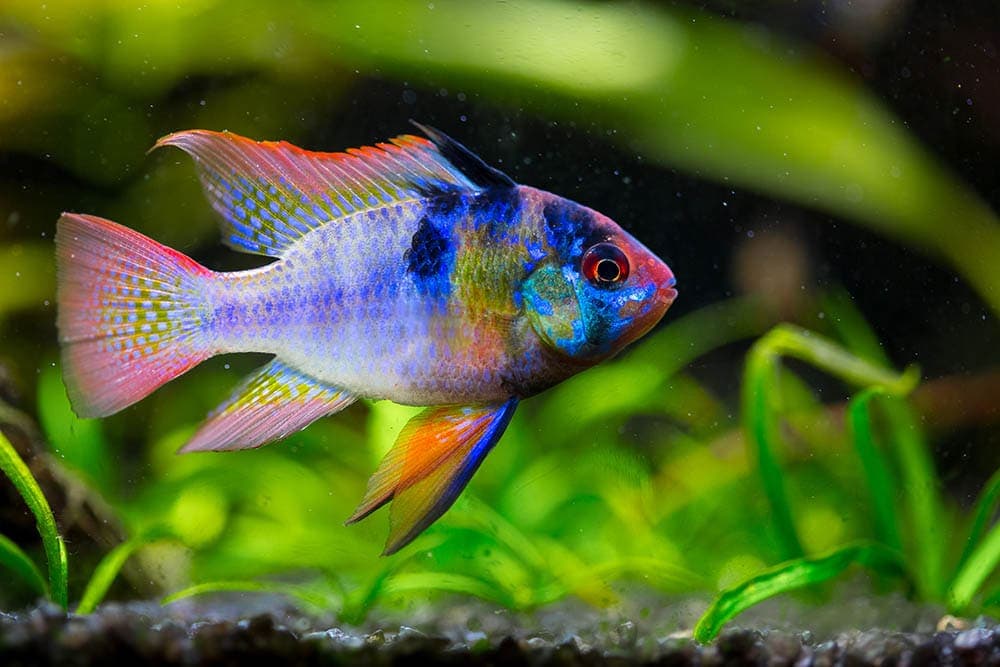
Sociability of the Ram Cichlid
Do These Fish Make Good Pets?
Yes, Ram cichlids are beautiful fish that can be a bright addition to your tank. It’s important to know before getting them, though, that these fish can be sensitive to poor water quality. Because of this, these fish aren’t ideal for the first-time fishkeeper.
Does This Fish Make a Good Tankmate?
Yes, they can be great tankmates. While they are often considered to be the most docile of the cichlid species, the Ram cichlid can still be a little bit spicy. They can be slightly territorial, especially during breeding season or when eggs are present. They may also become nippy or even aggressive in an overcrowded tank.
Care Guide & Tank Set Up
Water Quality, pH & Temperature
The tank’s water quality should be high to maintain the health of the Ram cichlid. The water should be free of ammonia and nitrite, and nitrate levels should be at or below 20 ppm.
They thrive in soft, acidic water, so aim for a pH level between 5.0–6.0, but they can do well in a pH up to around 7.0. While it’s important to maintain an appropriate pH level, be very careful with “chasing” a specific pH since this can lead to devastating losses in your tank if not done correctly.
These are tropical fish, so they should be kept in warm water temperatures. The minimum recommended temperature range is 77–78°F, with the recommended temperature falling between 79–85°F.
Substrate
These fish love to forage and dig through the substrate in their environment. Sand and aquatic soil are the best options, with most keepers recommending sand over soil. The substrate should be soft and smooth enough to not cause injury as your fish digs through it, and pieces should be too small to cause problems if swallowed.
Plants
It can be challenging to find plants that can not only tolerate the warm and acidic environment that the Ram cichlid thrives in but that also can tolerate being tugged on and dug up by your fish. Ideal plants are those that can be attached to surfaces, like java fern and most aquatic mosses. Plant weights can be used if you choose to put rooted plants in your tank.
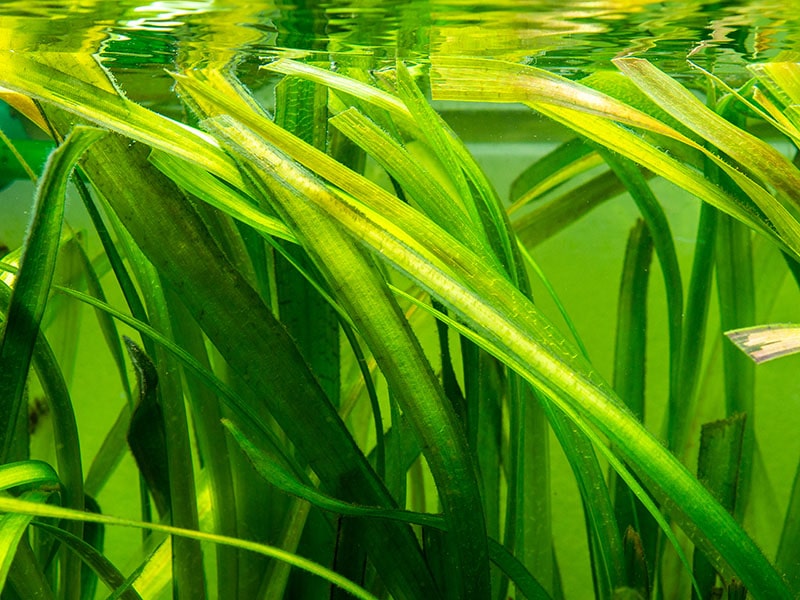
Lighting
While they do need a regular day/night lighting cycle, the Ram cichlid doesn’t tolerate bright lighting very well. Low to moderate lighting is recommended, but you should also aim to provide lighting that will maintain the growth of any live plants you place in the tank. In the wild, these fish live in blackwater environments, so their water is naturally clouded with tannins, which help reduce light in the water.
Filtration
Because of their need for pristine water, filtration is absolutely necessary for Ram cichlids. If your tank is overstocked, then your filtration should be upgraded to meet the additional bioload. These fish don’t need strong water currents, but some current is appropriate for them. Ideal filters are hang-on-back and canister filters, but internal filters can also work well for this species.
Things to Know When Owning a Ram Cichlid
Food & Diet Requirements
The Ram cichlid is an omnivore, so it requires a varied diet consisting of plant and animal matter. A high-quality community or cichlid food is a great diet base for them. They can also be offered tubifex worms, bloodworms, mosquito larvae, brine shrimp, algae sheets, cucumber, leafy greens, chopped strawberries, and peeled blueberries.
Size & Growth Rate
This is a small cichlid variety, rarely reaching a full 3 inches in captivity. They grow rapidly, usually reaching their full adult size by 4–6 months of age. Excellent water quality, a low-stress environment, and a healthy diet are all essential to fast growth.
Varieties
Although Mikrogeophagus ramirezi is a singular species of fish, there are a few color variations that have evolved through selective breeding. The German Blue Ram is one of the most vibrant varieties, featuring gold, blue, yellow, black, and red colors across their body. The Gold Ram has similar markings to the German Blue Ram, but its colors mainly stick within a gold, yellow, and orange color pallet.
Like the Gold Ram, the Electric Blue Ram has similar markings to the German Blue Ram, but it features fewer colors, with its colors staying within the blue and silver family. There is a newer Ram variety that is black in color, but it can be very difficult to find due to its current rarity.
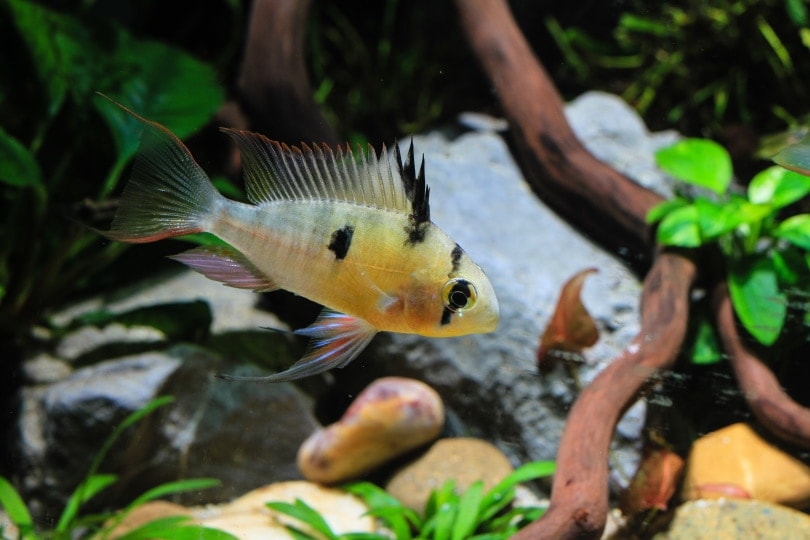
Lifespan and Health Conditions
With proper care, a Ram cichlid can live to 4 years of age. The average lifespan in captivity is 2–3 years, but without proper care, they will likely die very young.
- Ich
- Flatworms
- Fish tuberculosis
Male vs Female
Although they are technically sexually dimorphic, the differences between male and female Rams are very subtle. Interestingly, male Ram cichlids often grow larger than females, which is not overly common in the fish world. Size isn’t a good indicator of sex when you are purchasing a fish from a store, though, since the fish in the tank may be of all different ages.
As is common in many fish species, males tend to have longer, more torpedo-shaped bodies, while females have stockier, rounder bodies. Males usually have rounder heads with distinct foreheads, though, while females tend to have more slender faces.
Males and females both have a black spot under their dorsal fins. In males, this spot is opaque black in color, but in females, there are shimmery blue spangles in the black spot. Overall, though, males are usually flashier in color than females.
The pectoral fin in males is pointed and long, while the dorsal fins have greater length toward their middle and end areas. In females, the pectoral fin is rounded and shorter, while the dorsal fins are longer toward the front area and shorter toward the back.
Final Thoughts
If you’re interested in keeping a blackwater or tropical community tank with acidic water, then the Ram cichlid is likely an excellent addition. This fish is generally docile but can become territorial when not provided with enough space or if it feels like its territory, eggs, or mate are being threatened. When it comes to cichlids, the Ram cichlid is usually considered the most peaceful pick.
This is a beautiful fish with bright colorations, and while females may have drabber colors, they are still brilliantly colored compared to many other fish in their environment. The Ram cichlid is flashy and eye-catching, making it a wonderful addition to your tank. This can be especially beneficial if you are keeping a blackwater tank since the bright and shimmery colors will be easier to spot in the tannic water.
Related Reads:
- Low-Maintenance Freshwater Fish for Beginners (With Pictures)
- Freshwater Aquarium Sand vs. Gravel: Which to Choose
Featured Image Credit: DMITRII STARTCEV, Shutterstock

